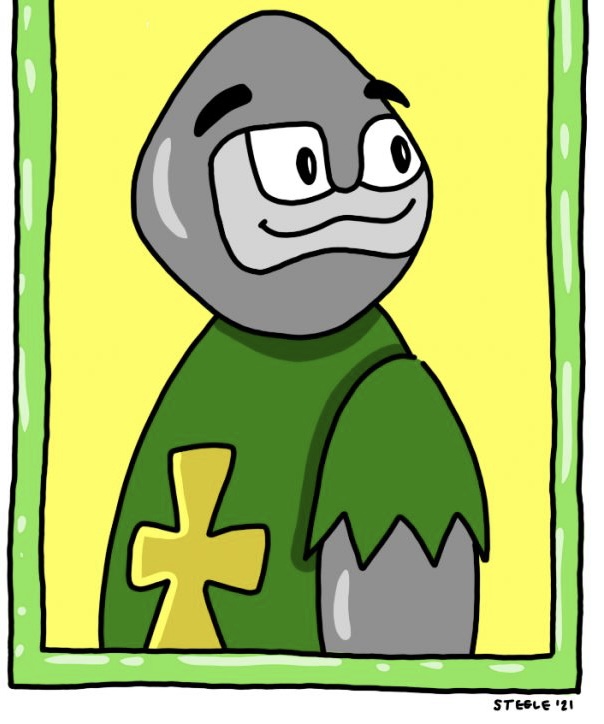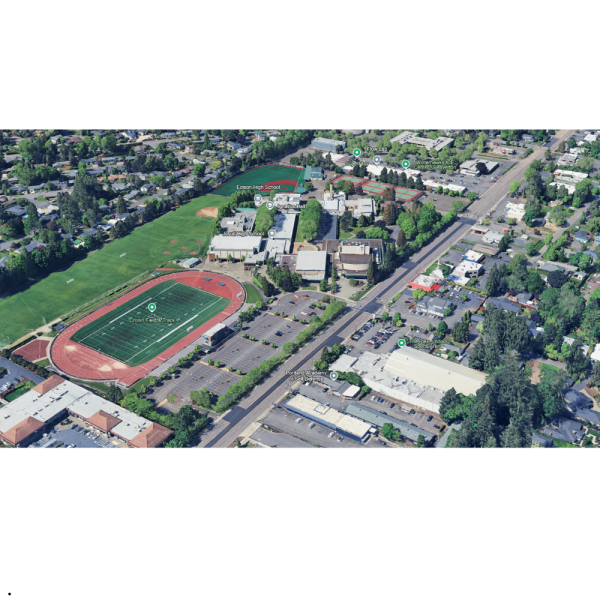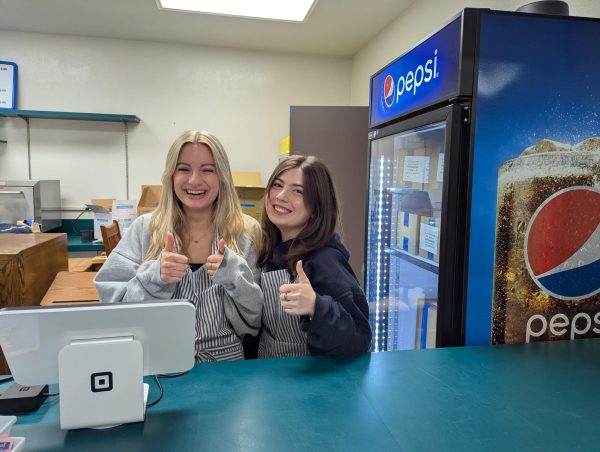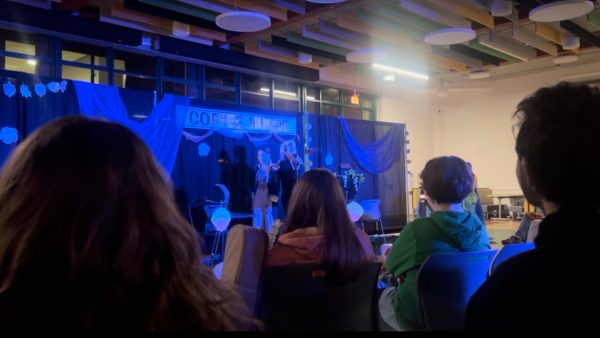The Final Decision on the Crusader Mascot
During the 2020-2021 school year, Jesuit High School in Portland, OR conducted a year-long review to assess the sensitivities and implications of the Crusader name and its visual representation, Charlie the Crusader, in accordance with the school’s mission, values, and identity.
Led by the Mascot Working Group (MWG), a diverse group of students, faculty, staff, alumni, past parents of alumni, and current parents, they were tasked with compiling information from the entire Jesuit community regarding the appropriateness of the Crusader name and mascot. The information compiled by MWG was reviewed by the Board of Trustees in January 2021 and on July 6, 2021, Jesuit High School announced the final decision via email: “Jesuit High School will retain the name “Crusaders” but discontinue any further use of the visual representation of “Charlie Crusader,” the medieval knight image created in 1963.”
Vice Principal of Academics and Student Life Khalid Maxie said that the questions around the sensitivities and implications of the Crusader name and its visual representation have been around for a long time, but the tense political and racial climate throughout the year 2020 pushed the conversation to the forefront.
“I think the timing for my perspective involves lots of racial reckoning; it just got pushed to the forefront that this is something we need to wrestle with and engage with in a thoughtful process,” Maxie said. “The time I won’t say was right, but there is no time like the present to tackle it. I think it would be disingenuous to say that everything that was going on didn’t help accelerate that and put things in our face that “hey, this a now or never type of deal that we have to explore for our community.”
Vice President of Communications and Public Affairs and member of the MWG Erika Tuenge agrees with Mr. Maxie, relaying that the 2020-2021 school year was dedicated to “really examining this issue with our community and going through a discernment process.”
An important part of the decision-making process was a survey sent out to 14,991 Jesuit students, alums, current parents, alum parents, faculty, staff, and coaches asking them to record their opinions on the matter. The data from the survey shows that 3,884 (26%) individuals responded to the survey, and of those 3,884 individuals, 2,525 (65%) voted to keep the Crusader name while only 1,359 (35%) voted to replace the Crusader name. A more in-depth breakdown of the process and data findings can be found in the Process Overview and Major Findings document linked here.
Mr. Maxie and Ms. Tuenge both highlighted the difficulty in compiling such raw and authentic data, but believe that their exposure to such diverse points of view and ways of thinking reflected how diverse, equitable, and inclusive the process was.
“I think that was the hardest part,” Maxie said. “We did get to look at the data, although we weren’t making the decision, and I think the more you read into the data, the more difficult this became. The more I learned, it became harder to wrestle with the future moving forward. I think that everyone who engaged in this process learned a lot in the process. Just from going through a discernment process, I think that it is really important to allow your hearts and minds to be changed.”
“We brought a lot of people to the table to share their opinions; to make them feel like they had a voice in this process and were listened to,” Tuenge said. “I think those goals were met. Hopefully everybody learned something and took away something from that.”
The review process was a chief priority of Jesuit’s Diversity, Equity, and Inclusion (DEI) strategic initiatives to acknowledge and act on the concerns raised by the Jesuit community about the past Crusader name and mascot. Jesuit High School thoughtfully contemplated and thoroughly reviewed this process not only through a DEI lens, but through the principles of the Catholic Church as well, a crucial component of Jesuit’s identity.
When questioned about how the final decision was perceived from a DEI lens, Mr. Maxie responded that the diversity of opinions and perspectives accomplished the goal of DEI’s strategic initiative for open and honest conversation surrounding the issue.
“I think plenty of people have their opinions about the decision that was made, and as you say from a DEI lense, and if we’re to be inclusive, equitable, and diverse, that means that you can select 10 people from the hall and just know that you may get as least six to eight different opinions,” Maxie said.
In the email announcing the final decision, there was a comprehensive compilation of information detailing the specifics of why “the Crusader name strongly supports the mission and values of Jesuit High School” and why the image does not.
Jesuit High School continues to support the belief that a Crusader “reflects someone who campaigns vigorously to bring positive change to the world, someone who is a true woman or man for others.” They attribute this definition to the students who have inextricably “committed to doing justice” and who have shown “determination for the cause of goodness and truth.” While Jesuit High School recognizes that the Crusades are historically violent and oppressive, they choose to align with the modern definition of the Crusader, adhering to the decision to retain the name. The modern definition is as follows: “One that accurately reflects who we are as a Catholic, Jesuit and Ignatian institution dedicated to forming people committed to others, leaders dedicated to making our world—and the lives of the excluded and the disenfranchised—better.”
The Board of Trustees decided to discontinue the visual representation of Charlie the Crusader because, as stated in the email, it did “not appropriately or accurately represent a Jesuit Crusader or support the mission and values of Jesuit High School today as a co-educational and diverse institution.” This decision was a response to various community members who voiced that the image of the medieval knight was “offensive, inconsiderate, not inclusive, and entirely inconsistent with Jesuit’s values and educational objective[s].”
Mr. Maxie and Ms. Tuenge emphasized that their roles were to facilitate the research and development process of the issue–not to make the final decision– making the process entirely unbiased.
“[In the educational video that the MWG created] it was really important that we represented the different perspectives from a point of unbiasedness so that it didn’t seem as if the decision was made,” Tuenge said. “We really wanted it to be a meaningful tool for our community.”
“Erika and I were very, very heavy processors, which I think made it much cleaner and allowed us to do what we needed to do to feel confident handing [the research and data] off [to the Board of Trustees],” Maxie said. “I think we were glad that we didn’t have both burdens because it would have muddied the waters. I just want to say that we did a good job gathering the data, making sure we had multiple opportunities where people could provide feedback, and that they felt that way too, whether it was a listening session, filling out the survey, or getting a feedback email.”
There will be more articles to come in this series on the Crusader mascot change, including student perspectives, pros and cons, and an opinion piece.









